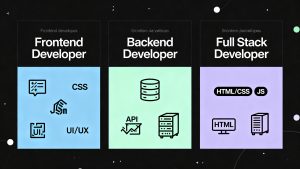In 2025, DevOps is undergoing a profound transformation fueled by artificial intelligence, security integration, and intelligent automation. Global DevOps adoption continues to soar as organizations redefine how software is built, deployed, and operated for greater speed, resilience, and value delivery. The DevOps market is expected to reach $25.5 billion by 2028, demonstrating the critical role of cloud-native methods, advanced security, and automation in modern development and operations.
AI-Driven Automation Revolutionizes DevOps
Artificial intelligence and machine learning lie at the heart of next-generation DevOps operations. These technologies automate sophisticated processes, deliver predictive analytics for real-time incident management, and empower self-healing systems capable of resolving issues autonomously.
- Predictive analytics monitor historic trends and proactively prevent failures.
- Automated testing generates intelligent test cases, speeding releases and improving coverage.
- Self-healing capabilities autonomously address anomalies, minimizing downtime and boosting system reliability.
DevSecOps: Embedding Security into Every Stage
DevSecOps marks a paradigm shift by integrating security throughout the software lifecycle. With security-as-code and shift-left approaches, organizations identify risks earlier, employ automated testing, and enforce compliance directly within pipelines.
- Security policies are now version-controlled and treated as infrastructure code.
- Automated scanning and real-time threat monitoring provide continuous protection.
- Early detection and remediation significantly reduce risks and compliance costs.
Platform Engineering: Boosting Productivity and Simplicity
Platform engineering is gaining traction as organizations build internal developer platforms for self-service, standardized workflows, and infrastructure abstraction. This shift enables developers to focus on innovation rather than operational complexity.
- Custom development platforms streamline deployment and monitoring.
- Standardized “golden paths” enable rapid, safe software delivery.
- Development productivity increases by 30–40% through reduced operational overhead.
GitOps: Unifying Deployment with Git
GitOps positions the Git repository as the central source of truth for infrastructure and application deployments. This approach enhances auditability and consistency, making Git-powered workflows the standard for Kubernetes and multi-cloud environments in 2025.
- Infrastructure and app changes are managed as code within Git.
- Automated pipelines synchronize environments and reduce configuration drift.
- Teams benefit from improved collaboration, rapid rollbacks, and deployment confidence.
AIOps and Intelligent Operations
AIOps, or Artificial Intelligence for IT Operations, is transforming observability and incident response. These platforms leverage vast datasets, providing automated anomaly detection, root-cause analysis, and predictive maintenance for superior reliability.
- AI models analyze real-time signals, forecast failures, and automate responses.
- Intelligent alerts reduce noise, enabling fast, precise interventions.
- Operational intelligence optimizes resource allocation across cloud and hybrid environments.
Cloud-Native and Multi-Cloud Advancements
Kubernetes, microservices, containers, and serverless functions have become the foundation of cloud-native DevOps. Multi-cloud and hybrid cloud strategies increase flexibility, optimize costs, and prevent vendor lock-in.
- Cloud-native pipelines standardize deployments across platforms.
- Edge computing and serverless extend workloads closer to users.
- Consistent tools enable seamless management across multiple providers.
Infrastructure as Code: Next-Generation Automation
Modern Infrastructure as Code (IaC) emphasizes automation, policy as code, and immutable infrastructure managed directly from version-controlled repositories.
- GitOps-integrated IaC synchronizes infrastructure changes with code commits.
- AI-powered provisioning optimizes resource allocation and predicts future needs.
- Policy-driven approaches automate governance and compliance.
Observability, Resilience & Chaos Engineering
Advanced observability tools deliver end-to-end visibility, distributed tracing, and user experience insights powered by AI. Chaos engineering becomes routine, simulating incidents to enhance system resilience.
- Distributed tracing and smart logging diagnose microservice issues rapidly.
- User experience monitoring drives proactive improvements.
- Automated chaos experiments strengthen reliability before reaching production.
Low-Code/No-Code and RPA in DevOps
Low-code, no-code, and robotic process automation tools democratize development and streamline routine tasks across the DevOps pipeline.
- Citizen developers build apps under governance frameworks
- Automated test, deployment, and incident response processes accelerate delivery
- Integration with CI/CD and monitoring tools ensures quality at scale
FinOps: Financial Control in the Cloud Era
FinOps integrates real-time cloud cost monitoring and optimization directly into DevOps workflows, ensuring financial accountability alongside performance and scale.
- Automated budget controls and resource optimization reduce expenditure
- Cost allocation provides transparency across teams and projects
- AI-driven insights promote efficient cloud utilization
Site Reliability Engineering and Developer Experience
Modern SRE approaches balance reliability, SLOs, and automation to reduce toil, supported by intelligent systems and dynamic error budgets. Enhancements in developer experience are prioritized through self-service tools, seamless workflows, and instant feedback.
Best Practices and Roadmap for 2025
A successful DevOps journey in 2025 demands a strategic blend of automation, security, platform engineering, and continuous improvement. Organizations are:
- Beginning with automation and CI/CD foundations
- Integrating security, compliance, and AI-driven insights
- Prioritizing developer experience and workforce skills development
- Measuring both technical and business outcomes
Conclusion
DevOps in 2025 is defined by smart automation, embedded security, platform-centric engineering, and cloud-native agility. Mastering these trends gives organizations the tools to accelerate innovation, reduce risks, and boost competitive advantage in a rapidly evolving digital landscape.
Read more such articles from our Newsletter here.



